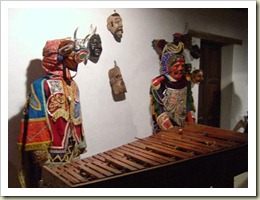Music
 The two sister islands of Antigua and Barbuda are located in the Caribbean’s Lesser Antilles chain of islands and together they both form a nation. Many Caribbean popular music genres have found a second home here. You can listen to soca, steeldrum, calypso, reggae and zouk. The ones which best integrate to the modern popular music in Antigua are the calypso and the steeldrum. These styles are original from Tinidad and Tobago.
The two sister islands of Antigua and Barbuda are located in the Caribbean’s Lesser Antilles chain of islands and together they both form a nation. Many Caribbean popular music genres have found a second home here. You can listen to soca, steeldrum, calypso, reggae and zouk. The ones which best integrate to the modern popular music in Antigua are the calypso and the steeldrum. These styles are original from Tinidad and Tobago.
Because the population descends from the West Africans slaves brought here, the music has important African influences and only few European ones.
There isn’t a dedicated study regarding the history of music in Antigua and Barbuda, so most of the information comes from secondary sources like essays or novels.
History
The first documentation of Antigua and Barbuda music dates back to Christopher Columbus. When he discovered the islands in 1493, the population was represented by the Arawak and the Caribs. The music previous to this discovery is almost unknown. Around 1780 there are documents that tell about the African workers practicing dances on music played on the banjar (similar to the modern banjo) and on the toombah (the present tum tum), which was a drum with tin jingles and shells.
During the missionary period, the African slaves’ music got many influences from the European religious music. Examples of this are the Salvation Army brass bands. From the middle to the end of the 19th century, Portuguese workers arrived in Antigua, bringing their own music. After the Portuguese left, Lebanese immigrants came in the 1880s, bringing with them the Lebanese music.
Folk music
Because the French colonial rule banned celebration of the Carnival by African slaves, they continued in secret, in their homes. Thus, it was created a certain type of dance, song and percussion called benna. Later, the folk music of Antigua and Barbuda got more and more influences from the calypso and steelpan of Trinidad.